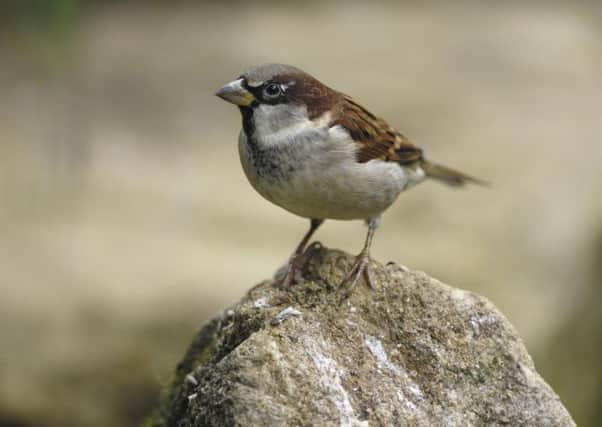Lincolnshire households asked to spend an hour relaxing watching wildlife and help the RSPB's Big Garden Birdwatch


The world’s largest garden wildlife survey, now in its 37th year, takes place this weekend on January 30 and 31. Since it began it has provided valuable information about the changes in numbers of birds using our gardens in winter.
Continuing declines include starlings and song thrushes, which have dropped by an alarming 80 and 70 per cent respectively since the Birdwatch began in 1979.
Advertisement
Hide AdAdvertisement
Hide AdThere is slightly better news for the house sparrow, as its long term decline appears to have continued to slow, and it remains the most commonly spotted bird in Lincolnshire gardens. However, its numbers have dropped by 57% since 1979.
Daniel Hayhow, RSPB Conservation Scientist said: “Last year’s survey saw more than eight-and-a-half million birds spotted, making it another great year for participation. With over half a million people now regularly taking part, coupled with over 30 years worth of data, Big Garden Birdwatch allows us to monitor trends and helps us understand how birds are doing.
“As the format of the survey has stayed the same, the scientific data can be compared year-on-year, making your results very valuable With results from so many gardens, we are able to create a ‘snapshot’ of bird numbers across the UK. Once we know which birds are in trouble, together we can ensure that our garden wildlife will be around forever.”
As well as counting their feathered friends, the RSPB is also asking participants to log some of the other wildlife they see in their gardens and green spaces such as hedgehogs, foxes, stoats and squirrels, to help build an overall picture of how important they are for giving nature a home.
Advertisement
Hide AdAdvertisement
Hide AdIn 2014, as a new part of the Big Garden Birdwatch, the RSPB asked participants to tell us about some of the other animals in their garden including badgers, squirrels and hedgehogs. Slow worms and grass snakes joined the list in 2015 with foxes and stoats added to this year’s list.
Daniel added: “The threats to our wildlife means that it’s facing tough times. For example it is estimated that we’ve lost more than half of our hedgehogs in the last 50 years. We’re going to include this part of the survey every year now, enabling us to monitor the distribution of our other wildlife as well as trends in bird numbers.”
The survey is part of the RSPB’s Giving Nature a Home campaign, aimed at tackling the housing crisis facing the UK’s threatened wildlife. The RSPB is asking people to provide a place for wildlife in their own gardens and outside spaces – whether it’s putting up a nest box for birds, creating a pond to support a number of different species or building a home for a hedgehog. The Big Garden Birdwatch is just one of the steps you can take to help nature near you. Wherever you live, you can help give nature a home.
For more information on Big Garden Birdwatch 2016 visit rspb.org.uk/birdwatch to register and download a pack.
The parallel event, Big Schools’ Birdwatch is taking place this month too. Further information can be found at rspb.org.uk/schoolswatch